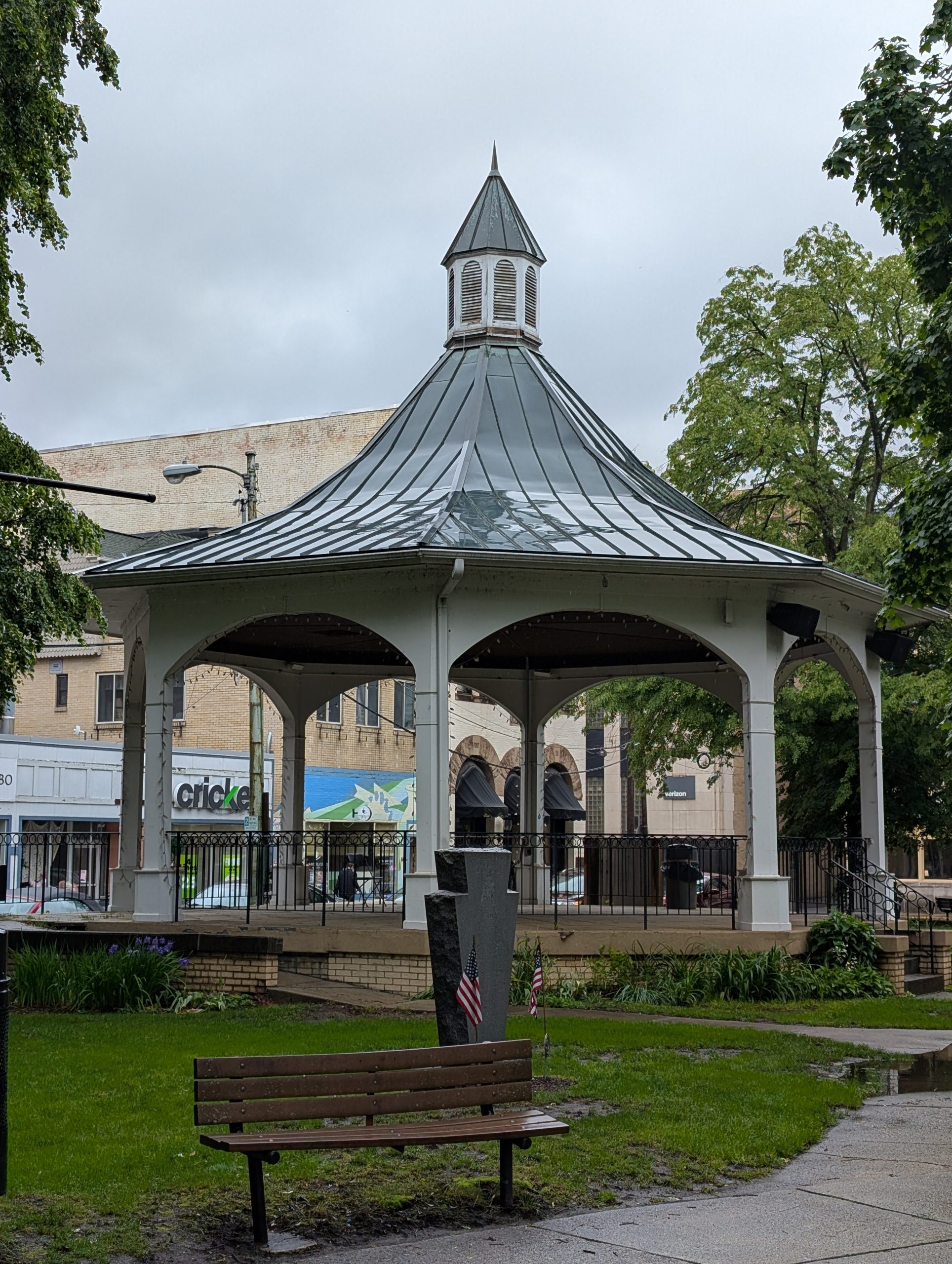Words and photos by Robb Smith

There’s a kind of luck in cloudy light.
It softens edges, dulls the glare, and lets details speak for themselves. When I walked through Central Park that day — camera in hand, drizzle starting and stopping — I didn’t know I was documenting the park just before it would change.
I was still new here, still learning how this valley breathes. Johnstown struck me as a place that had just finished holding its breath — a town caught between weather and history, between what’s been rebuilt and what still remembers.
So I wandered downtown, following the sound of the fountain, the smell of rain on brick, the echo of the past bouncing between the old facades. I wasn’t looking for anything in particular — just a place willing to introduce itself.
The park obliged.
The Founder’s Gaze
Joseph Johns stands quietly at the park’s center, framed by trees that have seen as many seasons as the city has stories.
The rain gave his bronze face a darker hue that day, deepening the lines and folds like a portrait of thought. The plaque beneath him reminds visitors that this city was built by hands and hearts that believed in it enough to carve permanence from floodplain and grit.
The statue doesn’t tower. It endures — the kind of presence that asks for respect more than attention.
The Park’s Heartbeat
Even under gray skies, the park has rhythm.
The fountain murmurs. The gazebo hums with echoes of brass bands and public speeches. The benches keep their quiet conversations, worn smooth by time and weather.
The cannons — once proud, now mossed — sit like old guardians beside the walkways.
Each piece of the park seems to know its part in a larger memory: the slow, steady heartbeat of a city that refuses to stop.
I paused more than I shot that day. The stillness asked for patience, as if the park wanted to be seen honestly before the next chapter began.
The Weather’s Honesty
I would have preferred sunlight and sharp shadows. Every photographer would.
But the clouds gave me something better — honesty.
That soft gray light let the textures breathe: the rough granite, the iron benches, the streaked fountain stone.
It’s the kind of light that refuses to flatter. It tells the truth, and that’s what made the day worth remembering.
When the renovation starts, I’ll be glad to have these photos — not the glossy version, but the real one that existed for anyone who cared to look up that afternoon.
Monuments and Memory
Every monument in this park tells a piece of a larger story.
The bell, heavy and still. The soldier standing guard in bronze. The founder watching from the center. Each carries its own share of pride and loss.
This isn’t a park built to impress — it’s a park built to remember.
And walking through it, lens fogging in the cool air, I realized how rare it is for a place to keep so much of its past in plain sight.
Here, history isn’t behind glass. It’s underfoot.
A Place Between Eras
Every Appalachian town has one — a square, a park, a block where memory gathers like fog.
Johnstown’s version carries layers of it: joy, labor, tragedy, recovery.
You can feel it in the walkways, the ironwork, the trees bending just enough to make room for time.
Soon, it’ll look different. Maybe better. Maybe just newer.
But for a moment, it looked like this — dignified, patient, and full of stories that didn’t ask to be told, only remembered.
Closing Reflection
I’m grateful the weather didn’t wait for me to plan.
That gray afternoon gave me a version of this park that few postcards ever will — a quiet record of endurance in a town that knows something about it.
Sometimes it’s worth pressing the shutter just to say: this existed, and it mattered.


